| MWexperimental | 42 | kDa |
| MWexpected | 42 | kDa |
| VPorod | 70 | nm3 |
|
log I(s)
3.30×10-2
3.30×10-3
3.30×10-4
3.30×10-5
|
 s, nm-1
s, nm-1
|
|
|
|
![Monomeric DNA repair protein RAD51 homolog 1 double mutant [F86E, A89E] in complex with fourth BRC repeat (BRC4) Rg histogram Monomeric DNA repair protein RAD51 homolog 1 double mutant [F86E, A89E] in complex with fourth BRC repeat (BRC4) Rg histogram](/media/fitting_files/extra/plots/SASDQT9_fit3_extra1_rghistogram_img.png) Rg, nm
Rg, nm
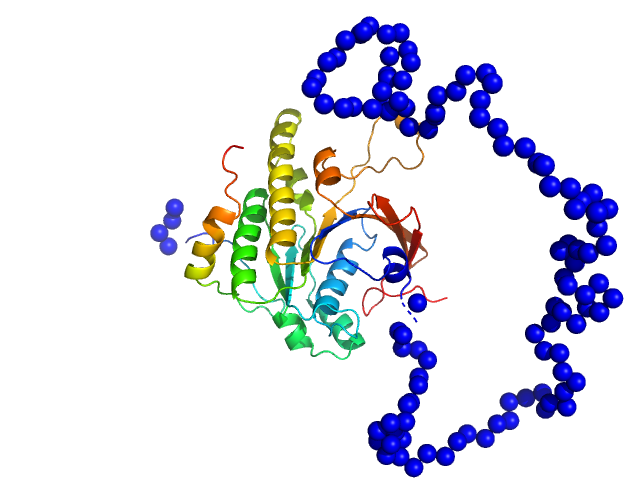
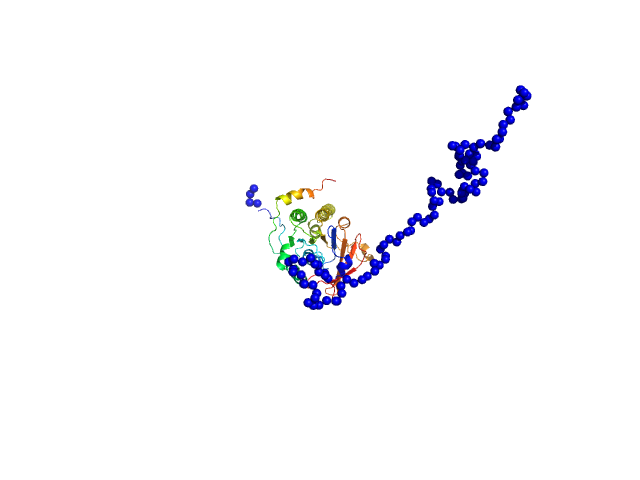
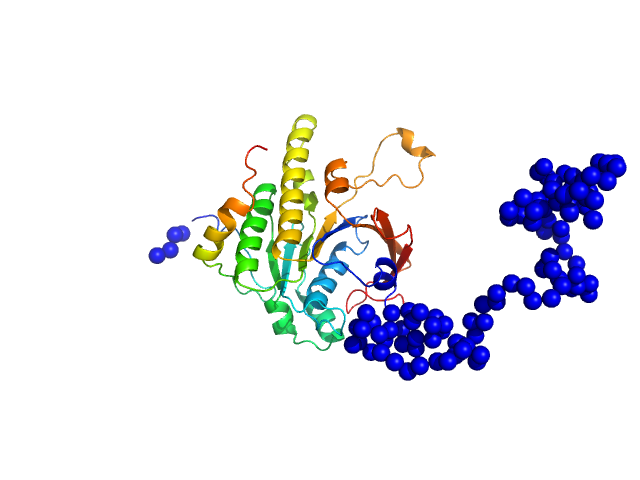
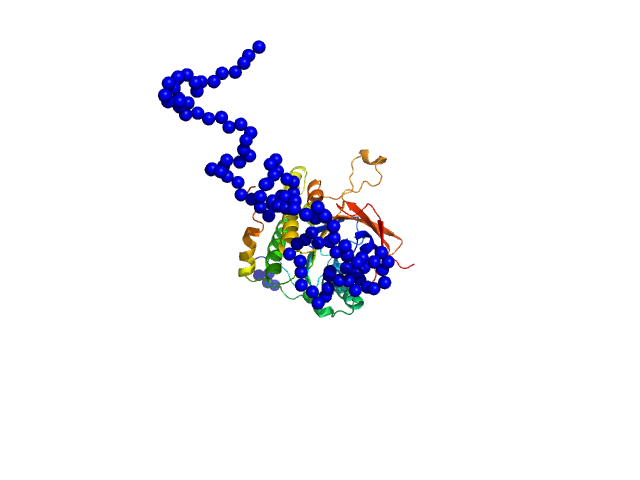
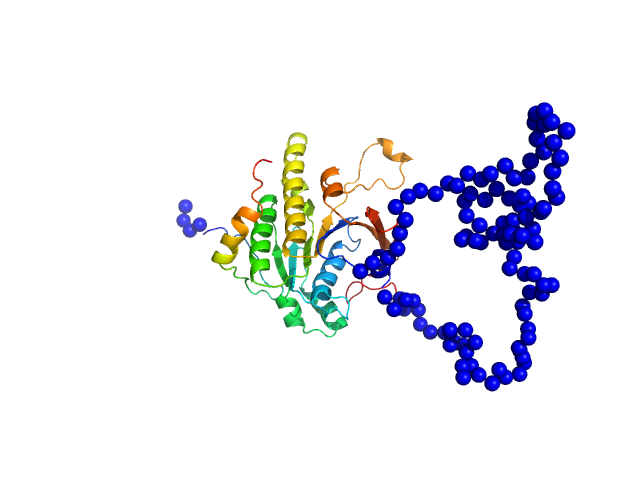
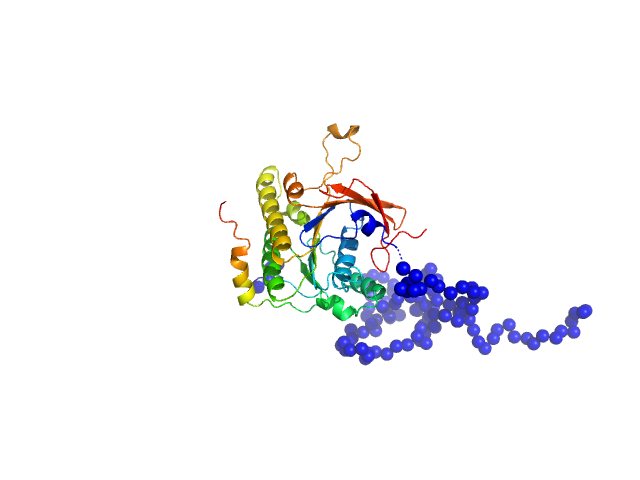
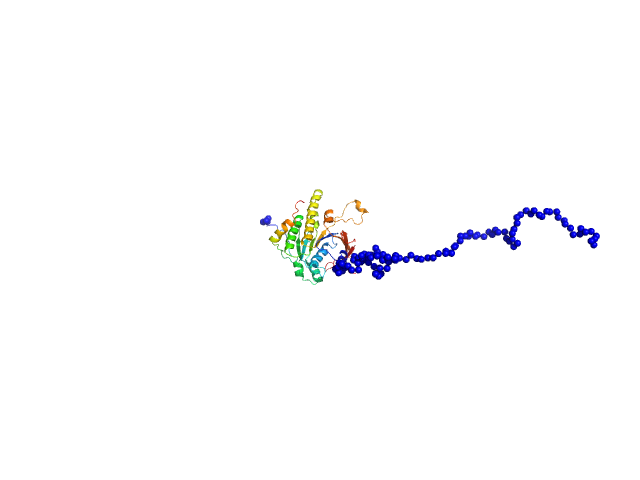
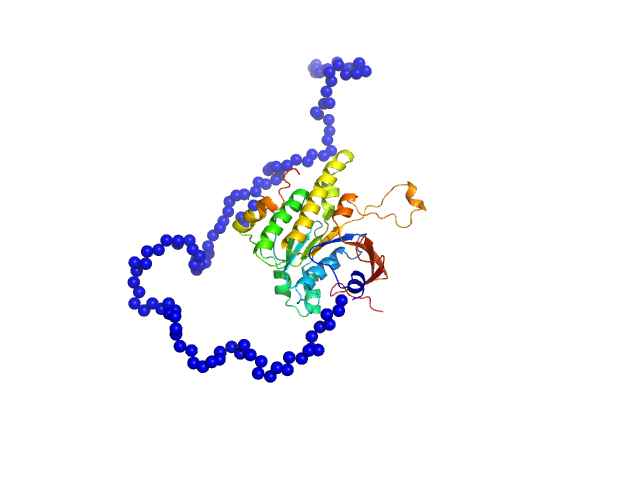
|
|
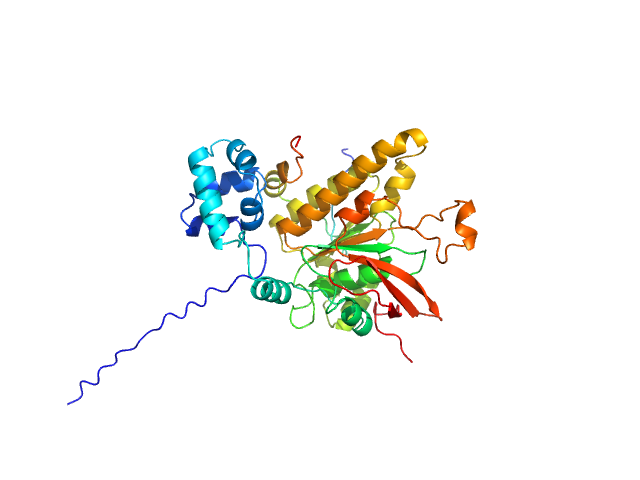
|
|
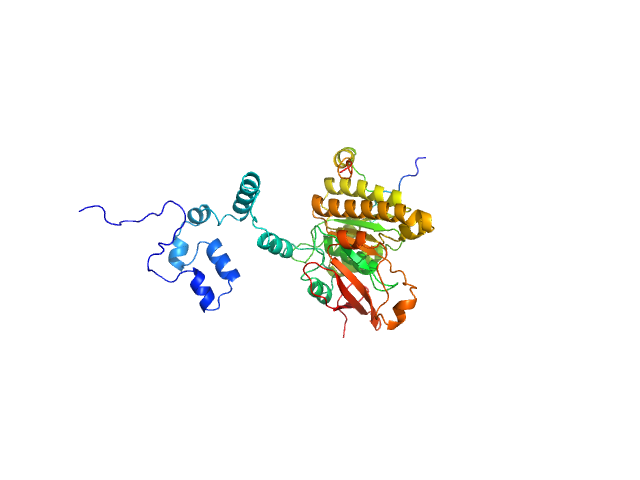
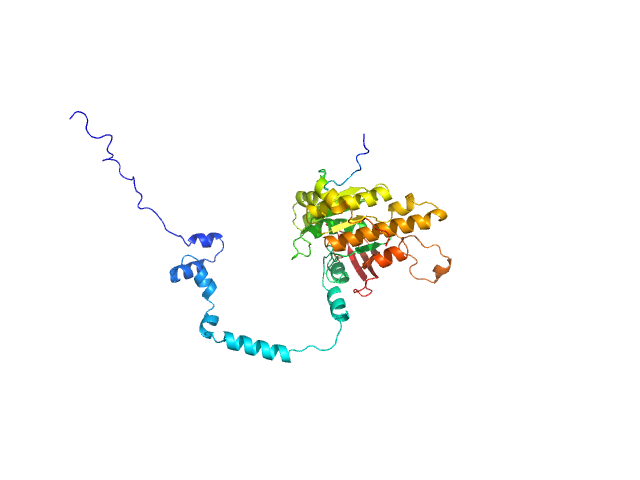
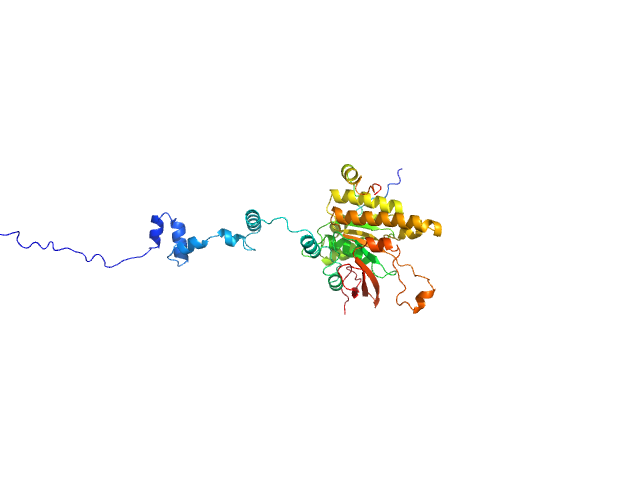
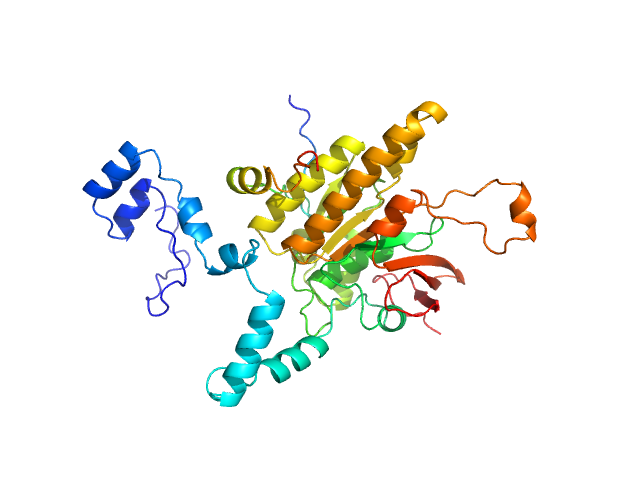
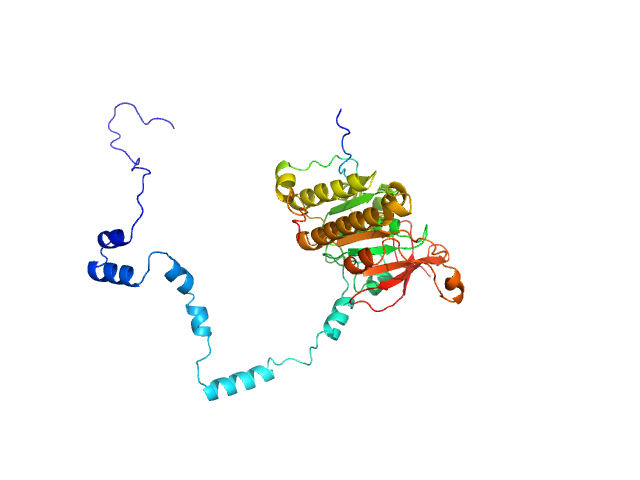
|
|
Synchrotron SAXS data from solutions of DNA repair protein RAD51 homolog 1 [F86E, A89E] in complex with the fourth BRC repeat of BRC4 in 20 mM HEPES, 50 mM Na2SO4, 2% v/v sucrose, pH 8 were collected on the B21 beam line at the Diamond Light Source (Didcot, UK) using a Eiger 4M detector at a sample-detector distance of 3.7 m and at a wavelength of λ = 0.09464 nm (I(s) vs s, where s = 4πsinθ/λ, and 2θ is the scattering angle). In-line size-exclusion chromatography (SEC) SAS was employed. The SEC parameters were as follows: A 50.00 μl sample at 7 mg/ml was injected at a 0.07 ml/min flow rate onto a GE Superose 6 Increase 3.2/300 column at 15°C. 29 successive frames were collected through the sample elution peak (from a total of 599 frames). The data were normalized to the intensity of the transmitted beam and radially averaged; the scattering of the solvent-blank was subtracted.
Experimental molecular weight has been calculated through volume of correlation (Vc). |
|
||||||||||||||||||||||||||||||||||||||||||||||||||||||